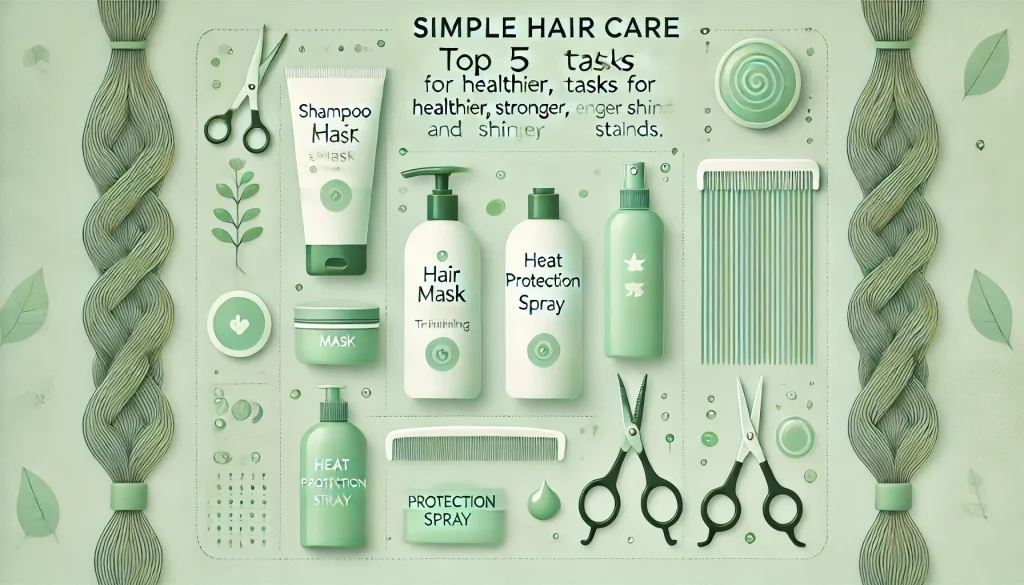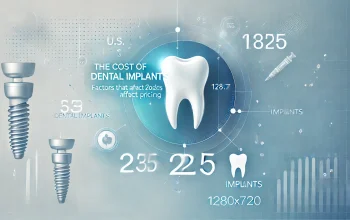Simple Hair Care: Top 5 Tasks for Healthier, Stronger and Shiny Strands Hair

Healthy hair care is not just about genetics or expensive salon treatments—it’s about the small, consistent habits you incorporate into your daily routine. If you’re looking to improve the health and appearance of your hair care, you don’t need to overhaul your lifestyle or spend a fortune. Instead, focus on these five simple tasks that can make a significant difference in the health of your hair care.
Table of Contents
1. Regular Scalp Massages: Stimulate Growth and Health
One of the most effective and underrated ways to boost hair health is through regular scalp massages. A gentle massage increases blood circulation to the scalp, which helps deliver essential nutrients to the hair follicles. This can promote stronger, thicker hair growth and reduce the risk of hair loss.
How to Perform a Scalp Massage:
- Use the pads of your fingers, not your nails, to gently massage your scalp in circular motions.
- Focus on different areas of your scalp, spending about five minutes each session.
- For added benefits, incorporate a nourishing oil like coconut, almond, or jojoba oil. These oils are rich in vitamins and fatty acids that can further nourish your scalp and hair care.
Benefits of Scalp Massage:
- Improves blood circulation
- Reduces stress and tension
- Promotes hair growth
- Enhances the absorption of hair care products
According to a study published in the journal Eplasty, participants who performed regular scalp massages experienced a noticeable increase in hair thickness after 24 weeks of consistent treatment .
2. Use a Sulfate-Free Shampoo: Gentle Cleansing for Healthier Hair
The shampoo you use can have a significant impact on the health of your hair care. Many commercial shampoos contain sulfates, harsh detergents that strip the hair of its natural oils, leading to dryness, brittleness, and even scalp irritation. Switching to a sulfate-free shampoo is a simple yet effective way to maintain your hair’s natural moisture balance and protect it from damage.
Why Sulfate-Free?
- Sulfates can be overly harsh, especially for those with sensitive scalps or color-treated hair care.
- Sulfate-free shampoos are gentler and help retain your hair’s natural oils, keeping it hydrated and soft.
- They reduce the risk of frizz and split ends, promoting smoother, shinier hair.
When choosing a sulfate-free shampoo, look for ingredients like coconut oil, argan oil, or aloe vera, which provide additional moisture and nourishment to your hair.
How Often Should You Shampoo?
It depends on your hair type. Those with oily hair may need to shampoo more frequently, while those with dry or curly hair may benefit from washing less often to preserve natural oils. Aim to wash your hair 2-3 times a week for the best results.
3. Deep Conditioning Treatments: Restore Moisture and Strength
Deep conditioning is a crucial step in any hair care routine, especially if your hair is prone to dryness or damage. Unlike regular conditioners, deep conditioning treatments penetrate the hair shaft more deeply, providing intense hydration and repairing damage from within.
How to Deep Condition Your Hair:
- After shampooing, apply a generous amount of deep conditioner to your hair, focusing on the ends.
- Use a wide-tooth comb to distribute the product evenly.
- Cover your hair with a shower cap and leave the conditioner on for at least 15-30 minutes.
- For an extra boost, apply heat by wrapping your head in a warm towel or using a hair steamer.
- Rinse thoroughly with cool water to seal the hair cuticles and lock in moisture.
Frequency of Deep Conditioning:
- For dry or damaged hair, deep condition once a week.
- For normal hair, every 2-4 weeks is sufficient.
According to a study in the International Journal of Trichology, regular deep conditioning treatments significantly improve hair elasticity, reducing breakage and enhancing overall hair health .
4. Trim Regularly: Keep Your Hair Free from Split Ends
While it may seem counterintuitive to trim your hair when you’re trying to grow it out, regular trims are essential for maintaining healthy hair. Split ends can travel up the hair shaft, causing more extensive damage if left untrimmed. By trimming your hair every 6-8 weeks, you can keep your ends healthy and prevent breakage, ultimately promoting longer, healthier hair.
How to Trim Your Hair:
- Use sharp, high-quality scissors designed specifically for hair cutting.
- Trim about 1/4 to 1/2 inch off the ends every 6-8 weeks, or as needed, to remove split ends.
- If you’re uncomfortable trimming your hair at home, consider visiting a professional stylist for regular maintenance.
Benefits of Regular Trims:
- Reduces split ends
- Prevents hair breakage
- Helps maintain hair shape and style
- Promotes healthier hair growth
A study published in Dermatology Practical & Conceptual emphasizes the importance of regular trims for preventing hair damage and maintaining overall hair health .
5. Protect Your Hair from Heat: Minimize Damage and Breakage
Heat styling tools like flat irons, curling irons, and blow dryers can cause significant damage to your hair if not used properly. High temperatures strip the hair of its natural moisture, leading to dryness, frizz, and breakage. Protecting your hair from heat damage is crucial for maintaining its health and shine.
Tips for Minimizing Heat Damage:
- Use a Heat Protectant: Before using any heat styling tools, apply a heat protectant spray or serum to your hair. These products create a barrier between your hair and the heat, reducing the risk of damage.
- Lower the Temperature: Use the lowest possible heat setting that will still achieve your desired style. Avoid using the highest settings, as they can cause irreversible damage to your hair.
- Limit Heat Styling: Try to limit the use of heat styling tools to no more than 2-3 times per week. On days when you don’t use heat, opt for heatless styling methods like braids, buns, or air drying.
Alternative Styling Methods:
- Air Drying: Whenever possible, let your hair air dry instead of using a blow dryer. This reduces the exposure to heat and minimizes damage.
- Heatless Curls: Use methods like twist-outs, braids, or rollers to create curls without the need for heat.
Research published in the Journal of Cosmetic Science shows that regular use of heat styling tools without proper protection can lead to significant hair damage, including loss of hair strength and elasticity .
Conclusion
Maintaining healthy hair doesn’t require a complex or expensive routine. By incorporating these five easy tasks into your daily and weekly hair care regimen—scalp massages, using sulfate-free shampoo, deep conditioning, regular trims, and protecting your hair from heat—you can significantly improve the health and appearance of your hair.
Consistency is key. While you may not see immediate results, over time, these simple habits will lead to stronger, shinier, and healthier hair. So, take the time to care for your hair with these straightforward, effective tips, and enjoy the benefits of beautiful, healthy hair for years to come.
References
- Eplasty. (2016). Effects of Scalp Massage on Hair Growth. Retrieved from Eplasty Journal.
- International Journal of Trichology. (2019). Deep Conditioning: An Effective Treatment for Hair Health. Retrieved from IJTrichology.
- Dermatology Practical & Conceptual. (2020). The Role of Regular Trims in Preventing Hair Damage. Retrieved from DPC Journal.
- Journal of Cosmetic Science. (2015). The Impact of Heat Styling on Hair Health. Retrieved from JCS.


